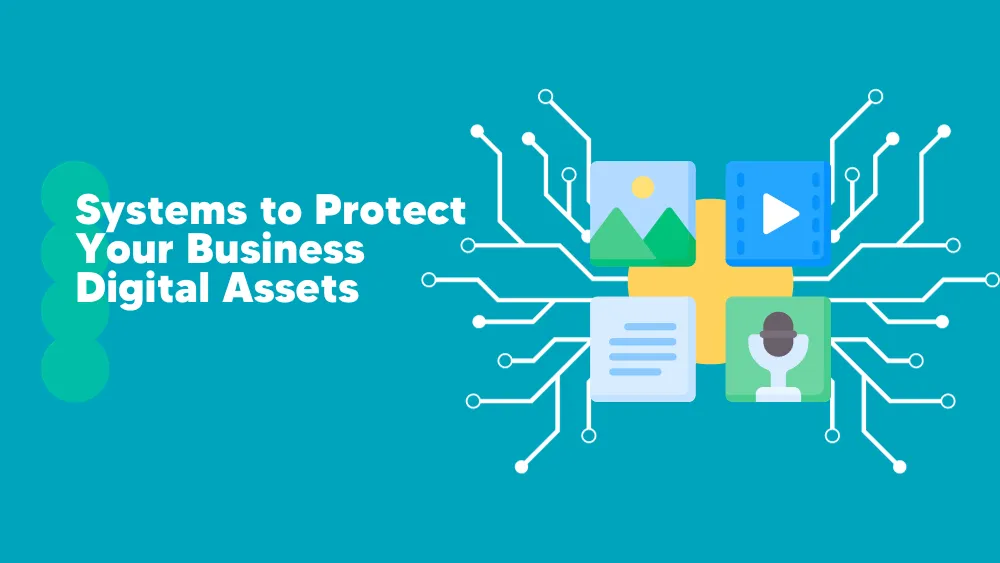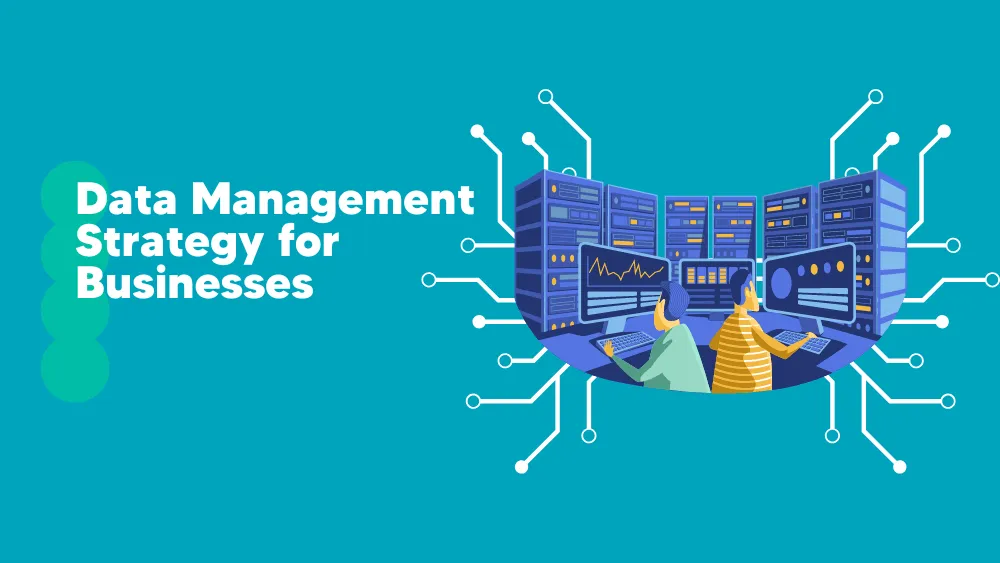
Best Digital Asset Management Software
What is Digital Asset Management (DAM) Software?
Digital asset management software is a digital era tool for managing digital assets. So, the first thing to understand is the Digital Asset. The digital asset involves digital files like logos, images, presentations, videos, and more. They are digital assets because the brands invest in them for various purposes.
Digital asset management software helps in digital assets storage and overall management. One research has proved that almost 50-70% of the digital assets remain unused by the brands. It happens due to the wrong organization of the files. From a broader perspective, it makes a significant loss to the companies.
Digital asset management software is the solution that is the perfect innovation to store, organize, and share digital assets. However, it does more than these basic operations. For example, with data assets, it also saves the metadata of the digital assets. For example, the file’s geographical location, the photographer’s name, etc.
Digital asset management software assists companies worldwide in sharing vital digital assets. It stores them in one place and makes them accessible at any location. The professional grade systems use the CDN (Content Distribution Network). It is used for the decentralized distribution of data assets globally.
Digital asset management software offers exceptional facilities for the brands. Some of the benefits when using it are:
- First, it saves the time and resources of the business.
- Second, it helps in the integrated workflows in the companies.
- Third, collaborate on digital projects with digital asset management tools.
Top Software for
Small Business
Medium Business
Enterprise Business
Free Software
Compare Digital Asset Management Software
PandaDoc
airSlate SignNow
Table of Contents
- What does Digital Asset Management Software do?
- Who can use Digital Asset Management Software?
- Types of Digital Asset Management Systems
- Main Benefits of using a Digital Asset Management Solution
- Key Features of Digital Asset Management Software
- How much does a Digital Asset Management System cost?
- Is there a difference between DAM and Digital Asset Management Software?
What does Digital Asset Management Software do?
Digital asset management software helps the user properly manage digital assets. It stores, organizes, searches, retrieves, and shares the whole digital asset catalog from one place. Moreover, the following are some main functions that DAM systems do:
-
Intuitive Organization
DAM keeps a brand’s crucial digital content in a centralized space. It organizes all the assets so that each member can access them easily. This way, everyone knows where and how to get the data they need for their work.
-
Rich Media Asset Management
In digital advertising, rich media is the ad that involves advanced elements like video, audio, etc., to attract visitors. DAM is designed for rich media. It has features to support the management of image, audio, and video files. This way, it is an excellent media asset management software.
-
Create, Collaborate, And Share
DAM software is a core hub that manages the content from the initial ideation step. Then, create the content with the feature to review, assign, and approve the digital asset. Then, when everybody gets on the same page, you can share files directly without going to external platforms.
-
Fast Access To Files
It also has robust search options to help users with fast file retrievals. The user needs to specify the file type and utilize the filters or narrow down the results in the document. The specific features for fast access to the files let you find the files in a few seconds.
-
Manages The Brand
Digital asset management platform performs the effective brand management of businesses. It manages the web portals of the brands for the users and key stakeholders. So they can access any file when they need it. Anyone can manage their brand with DAM by creating a custom page according to corporate brand guidelines.
-
Anytime and Anywhere File Access
This new generation of management software makes file sharing simple. It also provides complete security while sharing files. For example, it prevents files from any risky email attachments. Besides, it configures different level permissions for proper access.
-
Digital Publishing and Distribution
With the digital asset management solution, you can publish content on social channels. Besides, DAM keeps all the assets in one location and allows you to take them to different places, like web content management systems, marketing automation solutions, and more.
Who can use Digital Asset Management Software?
DAM systems are best for companies with a future-oriented vision for organization and collaboration. It is the right tool to get the most out of each department of the enterprise. In addition, as it streamlines asset management, every employee can save time and be productive.
Here are some top industries that can use digital asset management software:
Manufacturing
All manufacturing companies depend on their distributors to sell their products to end consumers. But it can be challenging to keep them updated with every new item on the list. So here comes the role of DAM. First, the manufacturing companies can use it to feed the information about their products.
The manufacturing companies can add product details, images, and collaterals. With DAM, any distributor or retailer can access the information they need. The SKU, product IDs, and more are the most accessible ways to search for the products.
Technology
Most technology companies need to engage with their clients. They connect with their consumers with the help of relevant digital channels. It is necessary due to the highly competitive industry. But it will be impossible if the departments are isolated. It can get resolved with the use of DAM in the tech industry.
A digital asset management platform can align the content by creating a central source. It is where any department can access the brand assets and various templates. Finally, the company can create and share the on-brand material.
Real Estate and Construction
Visual elements play a crucial role in the real estate and construction industry. The property photos, virtual tours, and other convincing content templates are used to attract prospects. But the team and agents must have access to all the content files.
DAM is the solution that helps real estate and construction companies to store their assets in one place. In addition, the central location distributes vital sales content to the staff and the organization.
Higher Education
In higher education, universities can use digital asset management software. They can use it to facilitate the students with more engagement. Besides, educational institutions can use digital asset content to fund and drive recruitment. Hence, the universities have massive data from multiple channels and teams. It can be challenging to manage them all.
The staff and students can access the data using a DAM tool. They can do it anytime and anywhere. Advanced digital asset management technology helps download the files, whether the associated people are on or off-campus.
Types of Digital Asset Management Systems
Brand Asset Management System
A brand asset management system is used to manage digital assets for businesses. The companies can store and access the assets relating to their marketing and sales activities. The digital content includes the company’s logos, product images, marketing copies, regularly used font types, publications, brochures, catalogs, videos, etc.
With the help of a brand digital management system, all the content stays at a central location. As a result, it is more convenient and cost-effective to generate new ad campaigns. In addition, modifications, edits, updates, and more are also possible to manage digital brands.
Library Asset Management System
Library asset management systems are helpful for the bulk storage of content. It allows organizing digital assets like photos, videos, audio, and more. All the material saved remains immutable. It means every stored asset stays as it is for further use.
After archiving all the vital assets, the users can easily retrieve them when needed. With the help of library asset management, anyone can access digital assets from anywhere.
Product Asset Management System
Another type of digital asset management system is the production asset management system. PAM is used explicitly for the management of digital and visual assets. The stored data can get used for frequent revisions or changes. This kind of content is usually used for live production.
A product asset management system is used for projects like movies, tv shows, or gaming applications. Besides, the PAM also handles the different versions of the files. Therefore, retrieving the older version if required will be a great help.
On-demand Asset Management System
On-demand content delivery services involve streaming shows, games, music, tv shows, movies, popular videos, and more. The proper storage of such content is necessary for the users and streaming platforms. An on-demand asset management system is the right tool to manage such digital assets.
With on-demand asset management, digital providers can provide better streaming services. As a result, the improved streaming services will help retain subscribers and get new ones.
Cloud-based Digital Asset Management System
A digital asset management cloud type is also on the list. It is called the cloud-based digital asset management system and is the most common kind. The cloud-based storage helps users to utilize the digital assets that are backed up. These are stored securely and archived in the digital asset management system.
This solution for enterprises can be a more advantageous option as the companies can get more creative benefits and quick access to proceed with their content management process.
Main Benefits of using a Digital Asset Management Solution
Digital asset management has some excellent benefits for users. The following are the top advantages that you can get with DAM systems:
-
Content organization in one place
The first benefit is appropriately organizing the data assets in one location. It is where every team member or external partner finds the files. For marketing, new assets are being created. Their misplacement can affect the business. So, centralized storage provides users with what they need in an aligned and accessible manner.
-
Promotes better workflow
The data asset management software users can share the assets, get feedback, and receive approvals from the reviewers. This way, the DAM gives the benefit of a streamlined workflow. It also brings efficiency and agility that helps in content creation. Besides, as the time will be less spent on manual tasks, the overall workflow will improve.
-
Ensure the brand consistency
You can maintain your brand image better by getting the best digital asset manager. You can do it by aligning the brand guidelines with content for the creators and communicators. The DAM tool will ensure that each team member uses the same on-brand files. Therefore, the consistent use of the appropriate content ensures the perfect brand messaging to the customers
-
Monitoring of content effectiveness
The digital asset management tool/s checks where and why the team members publish the content. It also measures how well the target audience engages with the published content. The system will get the analytical tools that perform the monitoring. Data obtained after the analysis is used for system optimization. It also makes an impact on vital content strategy decisions.
-
Integrate the redundant tools
DAM does the functions of more than one tool. It helps the users to have content storage, file sharing, and collaboration with the team members in one digital environment. Centralizing the content might overlap some tools if you use other tools. But with a digital asset manager, the consolidation of tools prevents such situations. It saves money and makes the entire content easily manageable for consumers.
Key Features of Digital Asset Management Software
As digital asset management has evolved, more features are added to the system. Here are the key features that will help the users:
-
Search
A prominent feature of the digital asset management tool/s is the facility to search. You can search for any digital asset by entering the keyword in the search bar. Besides, the more straightforward way is to add tags to the images to help the search process.
-
Upload/Download
The most apparent features are to upload and download the files in the data asset management system. You can upload multiple files faster at once. At the same time, in asset banks, you can click on “download original” to get the exact uploaded file. Another added benefit is downloading the files in sizes and resolutions.
-
Share
With the help of digital asset management software, you can share files with anyone. You can use DAM to share the files with in-house teams or external agencies. The best thing is the high-level security it offers while sharing the assets.
-
Version control
A brand needs to use the latest version of digital assets. Digital asset management software offers the feature of version control. It notifies me every time a new version of the file is uploaded to the system.
-
Customization
DAM provides the feature of customization or personalization for the users. It helps you to align everything with your brand. Some examples include using your logo, and brand colors, or selecting images to appear on the homepage.
-
Scalability
With time the brands keep growing. When businesses evolve, they need a system that adapts according to their needs. A digital asset management system offers the feature of being scalable. It helps when your users increase, additional integrations, new features for specific reasons, and more.
How much does a Digital Asset Management System cost?
The correct answer for the cost of digital or media asset management software is: “It varies according to the requirements of the users.”
However, the limited users’ package of DAM is affordable. The price can go up to cater to the enterprise customer’s needs.
Generally, a price range for one year of DAM software starts from less than $370 and can go over $250,00. Three parameters affect the cost of the digital asset management solution:
Data Storage: You will need more storage space if you have more digital assets. Hence, the more data storage is needed, the more the price of a DAM tool.
Limit of Users: Another parameter for pricing the DAM software is the number of users in the system. Mainly the main admins and publishers cost more than users.
Features: A general DAM system with fewer features can be inexpensive. But adding advanced features like AI, such as facial recognition, advanced workflows, video transcriptions, and more, can cost you more.
Is there a difference between DAM and Digital Asset Management Software?
DAM is the Digital Asset Management. It is used for storing, organizing, and distributing media files. At the same time, DAM software is the tool that helps brands to handle their digital assets.
All the assets like images, PDFs, audio, videos, templates, and more are easily stored in the DAM software. At the same time, their management is called the DAM.
What should you check when buying Digital Asset Management Software?
Here are some points to consider before buying a digital asset management solution:
Check interface: The first thing to notice is the interface of the DAM software and its usability. If you and your team cannot understand the complex use of the software, there is no point in buying it.
Allows integration: Integration helps fasten the workflow and saves time to export the assets for uploading. So, you must look for the integrations with the DAM tool you want to buy. You should be able to use social media, CMS integrations, and more.
Cloud facility: More IT resources can be required for the on-site DAM solutions. It will also need to maintain the servers and manage the security. Therefore, checking that your digital asset management software is giving the cloud-based facility is essential.
Scalability: When buying a DAM system, you should check how it will scale if your collection expands. Whether the storage space can be pushed is vital if you have future-oriented thinking to grow.
Mobile friendly: In a busy environment, everybody is on the go. Sometimes it becomes difficult to open devices like laptops or PCs. However, a smartphone is compact and can be used anytime. So, check that the DAM tool you select is compatible with mobile phones.






















